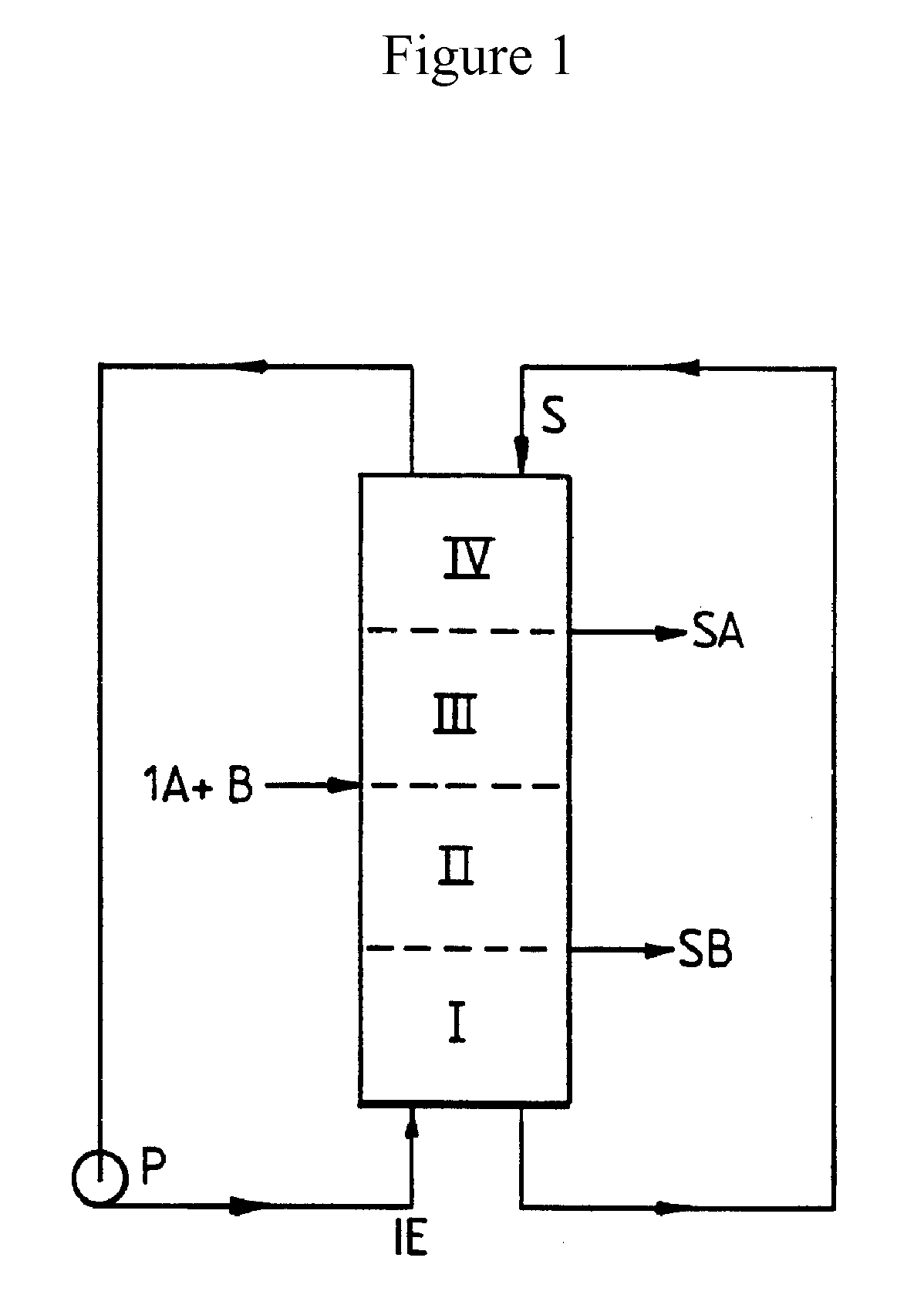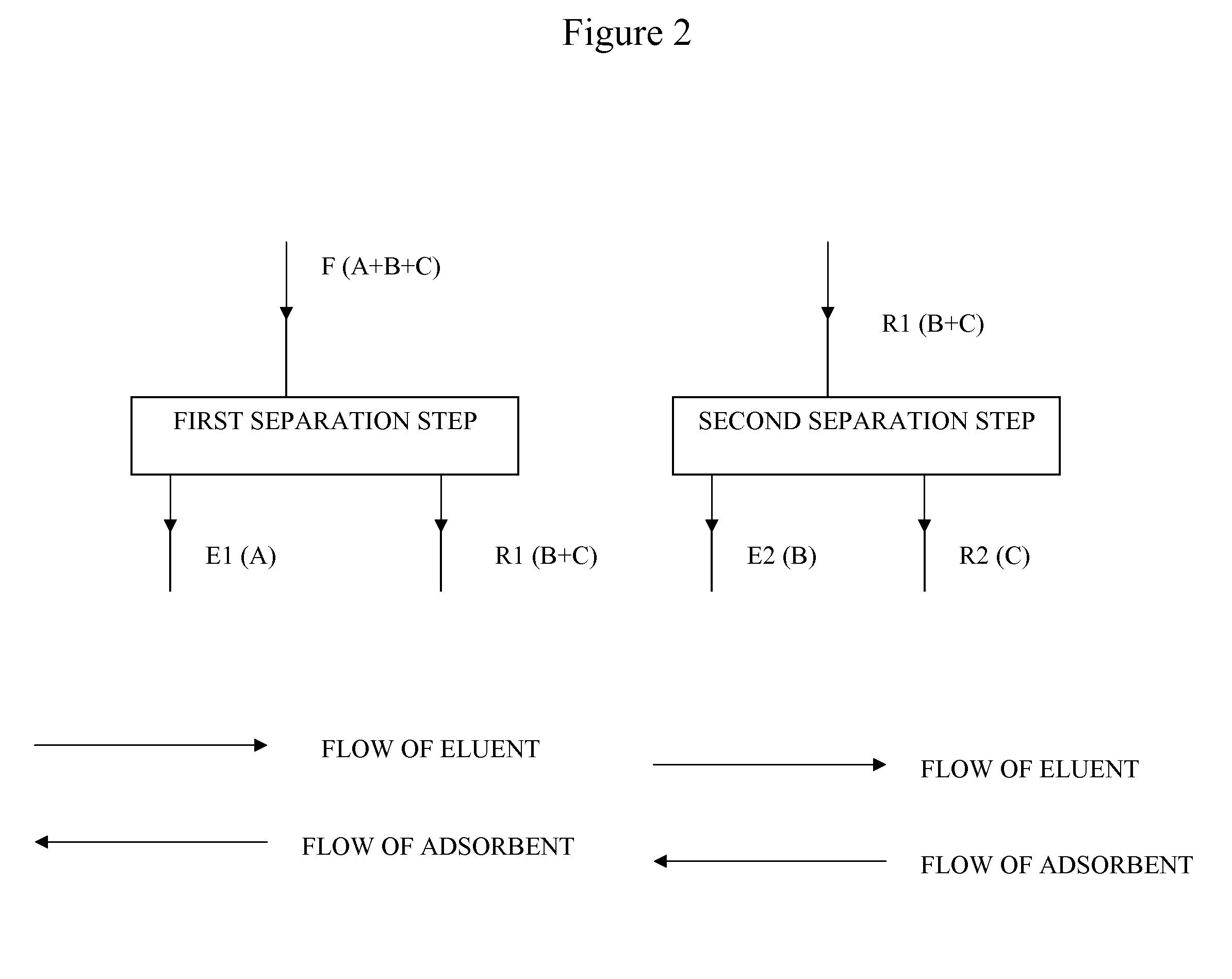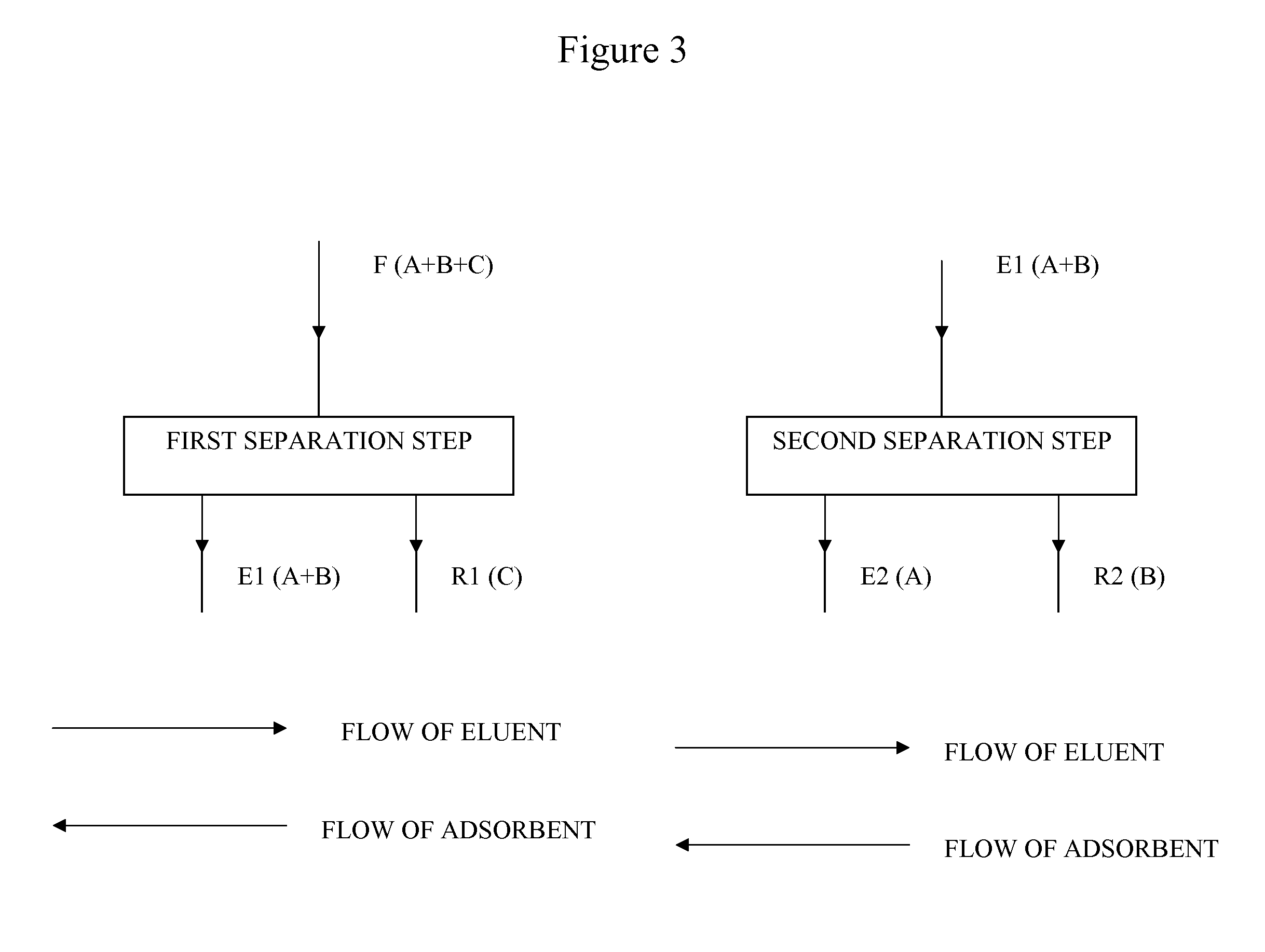Heated Chromatographic Separation Process
a chromatographic separation and heat treatment technology, applied in the direction of separation processes, fatty-oil/fat refining, chemical apparatus and processes, etc., can solve the problems of difficult fractionation and purification of pufa products to prepare pure fatty acids, prone to isomerization, peroxidation and oligomerization, and fragile pufas, so as to reduce the retention time of many pufas of commercial interest and reduce the amount of organic solvent elu
- Summary
- Abstract
- Description
- Claims
- Application Information
AI Technical Summary
Benefits of technology
Problems solved by technology
Method used
Image
Examples
example 1
[0268]A fish oil derived feedstock (55 weight % EPA EE, 5 weight % DHA EE) is fractionated using an actual moving bed chromatography system using bonded C18 silica gel (particle size 300 μm) as stationary phase and aqueous methanol (90:10 w / w methanol:water) as eluent according to the system schematically illustrated in FIG. 11. 15 columns (diameter: 22 mm, length: 300 mm) are connected in series as shown in FIG. 11. The desorbent was preheated to a temperature of 60° C., resulting in a column temperature of approximately 60° C.
[0269]The operating parameters and flowrates are as follows. For the conditions below, EPA EE is produced at a high level of purity (99% by GC FAMES). A GC FAMES trace of the EPA product is shown as FIG. 12.
[0270]Step time: 600 secs
[0271]Feedstock (F) feed rate: 0.5 ml / min
[0272]Desorbent feed rate (D1) in first zone: 33 ml / min
[0273]Extract rate (E1) in first zone: 7 ml / min
[0274]Extract recycle rate (D1-E1) in first zone: 26 ml / min
[0275]Raffinate rate (R1) in ...
example 2
[0280]A fish oil derived feedstock (55 weight % EPA EE, 5 weight % DHA EE) is fractionated using an actual moving bed chromatography system using bonded C18 silica gel (particle size 300 μm) as stationary phase and aqueous methanol (98:2 w / w methanol:water) as eluent according to the system schematically illustrated in FIG. 10. Separation 1 consists of 8 columns (diameter: 76.29 mm, length: 914.40 mm) which are connected in series as shown in FIG. 10. The intermediate raffinate from separation 1 is isolated and separated and separation 2 is performed using the same sequence of columns as above. The desorbent was preheated to a temperature of 40° C., resulting in a column temperature of approximately 40° C.
[0281]The operating parameters and flowrates are as follows. For the conditions below, EPA EE is produced at a high level of purity (98% by GC FAMES). A GC FAMES trace of the EPA product is shown as FIG. 13.
[0282]Step time: 1200 secs
[0283]Feedstock (F) feed rate: 35 ml / min
[0284]Des...
example 3
[0292]The retention times of a number of common fatty acids were measured in a fixed bed chromatographic apparatus using an aqueous methanol eluent and a C18 silica adsorbent. Thus, the retention times of Stearidonic acid (SDA), Eicosapentaenoic acid (EPA), Docosahexaenoic acid (DHA) and Oleic acid (OA) were measured, and the temperature and concentration of methanol was varied. The tables below show the absolute retention times, and relative retention times (relative to EPA) for the various fatty acids.
[0293]From the absolute retention times in tables 1, 3 and 5, it can be seen that the overall run time is much shorter at increased temperature, i.e. lower solvent consumption and higher throughput at higher temperature.
[0294]From the relative retention times in tables 2, 4 and 6, it can be seen that increased temperature has a greater effect on the relative retention time of the less polar impurities (OA) than more closely related components (DHA). Thus at 5% water, the relative ret...
PUM
| Property | Measurement | Unit |
|---|---|---|
| temperature | aaaaa | aaaaa |
| temperature | aaaaa | aaaaa |
| temperature | aaaaa | aaaaa |
Abstract
Description
Claims
Application Information
 Login to View More
Login to View More - R&D
- Intellectual Property
- Life Sciences
- Materials
- Tech Scout
- Unparalleled Data Quality
- Higher Quality Content
- 60% Fewer Hallucinations
Browse by: Latest US Patents, China's latest patents, Technical Efficacy Thesaurus, Application Domain, Technology Topic, Popular Technical Reports.
© 2025 PatSnap. All rights reserved.Legal|Privacy policy|Modern Slavery Act Transparency Statement|Sitemap|About US| Contact US: help@patsnap.com



